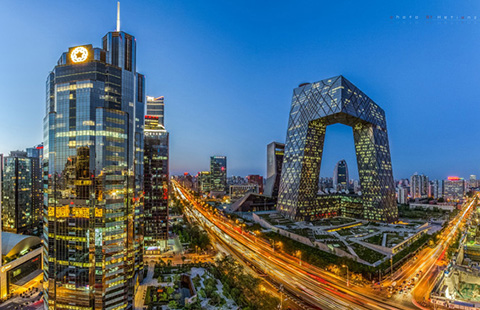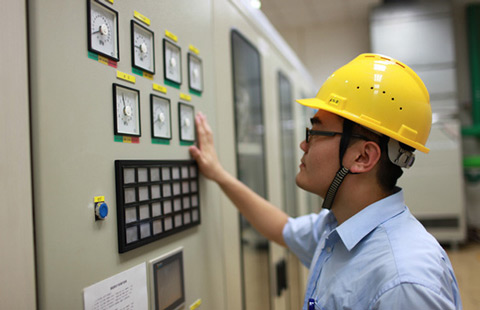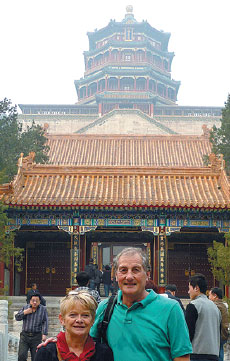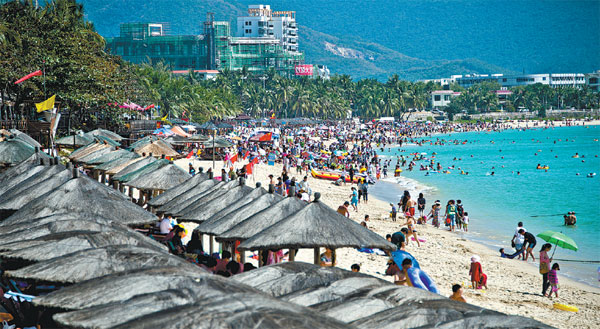Southern paradise looks for Western guests
Updated: 2015-07-14 17:09
By Andrew Moody, Jiang Wanjuan and Wang Hao(China Daily USA)
|
|||||||||
The authorities on Hainan Island are working flat out to make the province a major destination for international cruises and visitors from overseas. Andrew Moody, Jiang Wanjuan and Wang Hao report from Haikou. Andrew Moody, Jiang Wanjuan and Wang Hao
Hainan Island has been a holiday destination for Chinese tourists for many years, but now China's only tropical island is looking to attract Westerners and other tourists from overseas.
In 2010, the central government set a target for the island province to become an international tourism destination by 2020, but five years on, there is still some way to go. Last year, just 650,000 or 1.4 percent of Hainan's 47.89 million tourists, came from outside China, with many hailing from South Korea and Russia, rather than the United States or Europe.
The island is partly handicapped by its own success. Many wealthy Chinese own multimillion-dollar second homes there, and their yachts are moored in Sanya, the main resort, which has become a playground of the rich.
At certain times of the year, particularly Lunar New Year, room rates at the resort's hotels can skyrocket, with starting prices for a week's accommodation often leaving little change out of 50,000 yuan ($7,200).
Because of the makeup of Hainan's existing tourist trade, hotels and other tourism locations often cater more to visitors from China than overseas.
The other problem is that the island lacks name or brand recognition with many Westerners, who have simply never heard of it and don't associate tropical beaches with China.
Instead, the Western tourists Hainan's tourism chief is hoping to attract remain drawn to alternative locations in Southeast Asia, such as Thailand, the Philippines and Malaysia, which are often cheaper and also typically more international in feel.
A big task ahead
Sitting in a restaurant in the capital, Haikou, Chen Tiejun, deputy director of the Hainan Provincial Tourism Development Commission, admitted that meeting the 2020 target will be a sizeable task.
"Yes, it is a big challenge. First, the development of Hainan's tourist industry started later than in other locations in Southeast Asia whose facilities and services are now more mature. Second, the cost of traveling to surrounding countries has become cheaper, especially in recent years as the value of the yuan has risen."
Yet tourism has made huge strides in Hainan. In 1988, the island played host to 1.2 million tourists, including 204,600 from outside China.
International tourists hit a peak of 1 million in 2008 when the overall number was 20 million, less than half the current total.
Although Chen wants to see the number of international visitors rise far above that level, he said the province's advertising budget is just $2 million a year, far lower than in previous years.
"I always see commercials for Thailand, Singapore and Vietnam during July and August, but they cost around 20 million yuan for two months, and we don't have that kind of budget," he said.
However, the BBC's travel website now carries a Hainan page, which is updated twice a month, and a similar promotion in running on the online travel portal TripAdvisor. "We are adjusting our strategy by doing more online marketing, which is more cost-effective. These promotions have received good responses," Chen said.
Down in Sanya, the goal is to transform the resort into the Dubai or Miami of the South China Sea.
The man-made 365,000-square-meter Phoenix Island certainly resembles The Palm and other reclamation developments in the United Arab Emirates' city, and will soon also have a seven-star hotel to equal the Burj Al Arab, designed by Chinese architect Ma Yansong.
Li Li, deputy general manager of the Sanya Phoenix Island Investment Group, which has sunk a substantial sum into the area and now plans to invest a further 17.6 billion yuan, said she believes Sanya will be very firmly on the international map within 10 years.
"I can see it becoming like Dubai, a place where celebrities like David Beckham have homes, and also a center for international film festivals such as Cannes," she said.
Luring cruise liners
Key to the success of the development will be to make Sanya an established destination for international cruises.
By the end of next year, the port will have a 225,000-metric-ton berth capable of handling even the largest cruise ships. The luxury liner Queen Mary 2 docked at Sanya during Spring Festival earlier this year.
Cruise liners drop anchor at Sanya after Hong Kong en route to Vietnam, but there are only likely to be 33 visits this year, compared with 113 in 2013, because of operators' concerns about territorial disputes in the area.
Speaking in a 28th floor executive apartment overlooking the azure blue bay, Zhou Chunhua, director of the Sanya Tourism Development Commission, said cruise ships are the key to popularizing Sanya among foreign tourists.
"A cruise ship can stop for seven or eight hours and people can visit the city. When they go home, they will tell people about Sanya," she said.
Sanya is spearheading the island's efforts to meet the 2020 target, with visitor numbers growing 15.1 percent annually for the past five years. Hotel room capacity has increased by 52 percent over the past five years and another 46 hotels will be built within the next four years.
"One of the problems for Sanya is that it's known only in China and by people who own yachts, but not by the mass market, and that's what we want to address," she added.
The Hainan tourism authorities also want to attract Western tourists who have visited China before and are looking for something out of the ordinary.
Retired teachers Lynne Skeith, 63, and her husband, Trevor, 65, from Repton in Derbyshire in the United Kingdom, visited Beijing, Shanghai and Xi'an on a trip to China in 2011.
"If we were to go back, we are not really fully aware of what Hainan has to offer. We are not averse to a couple of days by the pool or on the beach, but we like sightseeing and culture. We are more likely to use it as a drop-off point on a cruise," said Lynne Skeith.
Some of the island's ancient culture lies inland, such as villages like those in the city of Qionghai that date back to the Song Dynasty (960-1279).
The island also boasts tropical forests, volcanoes and magnificent landscapes. One of the most famous attractions is the Xinglong Tropical Garden - which has been recognized by the UN for its environmental work - which was founded by former architect Colin Cheng Wen Thay in 1992. Spread over 400 hectares, the garden has 4,000 different plant species and has been the lifework of the lithe and sun-burnished Cheng, 70, who was born in Indonesia.
"Visitors often assume that I'm the gardener because I often do physical work.
"We get many international tourists, but they're mostly from Southeast Asia. Those from the US or Europe are mainly overseas Chinese," he said.
Chen, from the island's tourism development commission, believes investment in attractions such as gardens and also in tourism skills will ensure that Hainan achieves the 2020 visitor target.
"We lack tourism professionals who can speak foreign languages. Wages are in Hainan quite low, so people are more likely to want to work in hotels in Beijing and Shanghai rather than in Hainan. We have been working with local universities and developing tourism-related majors. I think developing these skills is the key," he said.
Contact the writers through andrewmoody@chinadaily.com.cn
|
Lynne and Trevor Skeith, from the United Kingdom, visited China in 2011. Hainan's tourism authorities are hoping to lure visitors away from China's better-known attractions. Provided to China Daily |
|
Tourists enjoy the sunshine on a beach in Sanya, Hainan province, a popular tourist destination. Chen Gang / for China Daily |
|
Performers at the Binlang Valley Cultural Tourism Zone demonstrate how fire was traditionally made by rubbing sticks together. Huang Yiming / China Daily |
(China Daily USA 07/14/2015 page6)

 Japanese war orphans visit graves of adoptive Chinese parents
Japanese war orphans visit graves of adoptive Chinese parents
 Top 10 Chinese provinces with most stock market investors
Top 10 Chinese provinces with most stock market investors
 Lovely 'pearl' on the mountain: Sayram Lake
Lovely 'pearl' on the mountain: Sayram Lake
 Student investment group scores big on stock market
Student investment group scores big on stock market
 Beijing roasts in high temperature
Beijing roasts in high temperature
 The world in photos: July 6-12
The world in photos: July 6-12
 Djokovic downs Federer to win third Wimbledon crown
Djokovic downs Federer to win third Wimbledon crown
 Top 10 Chinese companies by profit margin in 2015
Top 10 Chinese companies by profit margin in 2015
Most Viewed
Editor's Picks

|

|

|

|

|

|
Today's Top News
Pentagon tones down on China threat
Hillary Clinton calls for higher wages for everyday Americans
A day in the life of Muslims during Ramadan in NW China
China's carbon growth rate in decline: report
Mexico: Drug lord 'El Chapo' Guzman escapes, manhunt begins
Lawyers held for 'trying to influence verdicts'
Top court official under inquiry for graft
It is wrong to label illegal immigrants refugees: Opinion
US Weekly

|

|










